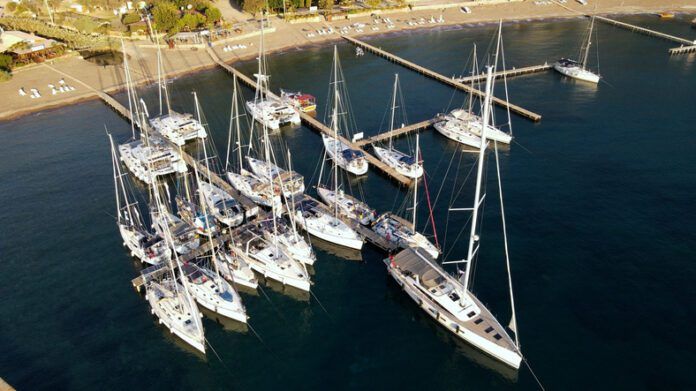Excerpted from Maneuver and Dock Your Sailboat Under Power
RETURNING TO THE DOCK
Time flies when you are sailing, but sadly the moment comes when it is time to return and put your vessel back in its slip. Much of what has to be done to return to the dock is simply the reverse of what was done to get out of the dock and go.
The following are scenarios which will help you in maneuvering a safe and unscratched boat to the dock, or better known as “no damage docking.”
END TIES
Wind blowing you off the dock
- Plan a fairly steep approach so that you are facing more so into the wind. Ensure your speed is just adequate to overcome effects from the wind. Ensure dock lines have been placed on the front and rear of the boat well before you enter the marina. Appoint crew members for tying off. Ensure you instruct your crew members not to jump to the dock, but step off once the boat is at the dock.
- Aim toward the point on the dock where you want the center of the boat to end up. Usually you can put it out of gear about here.
- Round out just before the dock. Engage reverse.
- Using a combination of reverse and forward, neatly slide the boat to the dock with zero forward speed. You’ll need to have your crew members act smartly to get the boat tied to the dock. In high wind conditions, you should use a spring line from the front of the boat to the center dock cleat. You can then easily turn the wheel away from the dock and engage forward. This will drive the rear of the boat to the dock. Use a fender on the front.
For more lessons, along with web-based videos to assist you, purchase Maneuver and Dock Your Sailboat Under Power from Practical Sailor.









































